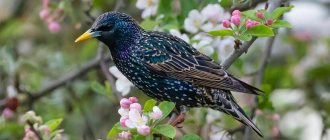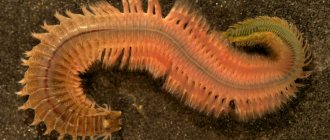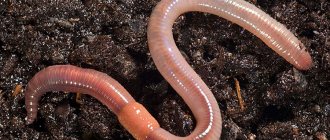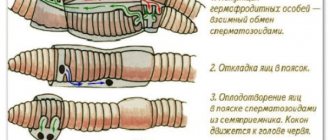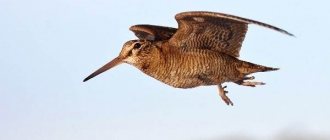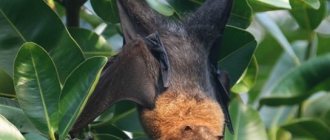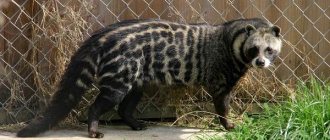An aquarium is a scaled-down model of a hydroecosystem in which fish, plants, snails and other organisms live and interact. The hermit crab will help maintain biological balance in the aquatic environment. It brings great benefits by cleaning aquarium plants from mucus and eating up leftover food for fish. In addition, this animal is interesting to watch.
Description and types of hermits
The hermit crab is a phylum of arthropods in the animal kingdom. 450 species of these crustaceans have been classified and described in detail in the scientific literature.
The most common among them:
- Caribbean hermit crab. It lives near the coast of Venezuela, Florida, and the Bahamas in thickets of mangrove trees. Selects places where sea water is highly diluted with fresh water. The shell is colored red and brown. The claws are purple. Communicates with other individuals through crackling and chirping. In captivity it can live up to 30 years.
- Blue-legged hermit crab. It got its name because of the blue-black color of its legs. It lives off the coast of Australia, on the Hawaiian Islands, and is found both in shallow water and at great depths near coral reefs. The claws are brown.
- Diogenes hermit crab. The name of the species is given by analogy with the ancient Greek philosopher Diogenes, who lived in a barrel. It is found in the intertidal zones of tropical and subtropical ocean waters. The forelimbs (walking limbs) are often striped, colored in green, blue, lilac, and orange tones.
1.Caribbean 2.Blue-footed 3.Diogenous
Biology
Shells and shell competition
When hermit crabs grow, they require large shells. Since suitable intact gastropod shells are sometimes a limited resource, vigorous competition often occurs among hermit crabs for shells. The availability of empty shells at any given location depends on the relative abundance of gastropods and size-matched hermit crabs. An equally important issue is the population of organisms that prey on gastropods and leave the shells intact. Hermit crabs kept together may fight or kill a competitor to gain access to the shell they favor. However, if the crabs change significantly in size, the occurrence of fights over empty shells will decrease or remain non-existent. Hermit crabs with also small shells cannot grow as fast as those with well-fitting shells and are more likely to be eaten if they cannot retract completely into the shell.
When a hermit crab grows in size, it must find a larger shell and leave the previous one. This habit of living in a used shell gives rise to the popular name "hermit crab", in analogy to a hermit who lives alone. Several species of hermit crabs, both terrestrial and marine, use vacancy chains to find new shells; when a new, larger shell becomes available, the hermit crabs gather around it and form a sort of queue from largest to smallest. When the largest crab moves into a new shell, the second largest crab moves into the newly vacated shell, thus making its previous shell accessible to the third hermit crab, and so on. Hermit crabs will often "gather" on a hermit crab with what they feel is the best shell, where they will actually rip its home (the shell) away from it and then compete for it, and each will eventually take it over.
For some large marine species, maintaining one or more sea anemones on the shell can deter predators. The sea anemone benefits because it is in a position to consume the hermit crab's food fragments. Other very close symbiotic relationships are known from encrusting bryozoans and hermit crabs forming
bryoliths.
Development and reproduction
Species of hermit crabs range in size and shape from species with a scute only a few millimeters long to Coenobita brevimanus
, which can live 12–70 years
and can approach the size of a coconut. Shell of a smaller hermit crab Birgus latro
(coconut crab) is the largest terrestrial invertebrate in the world.
The young develop step by step with the first two (nauplius and protozoea) occurring in the egg. Most hermit crab larvae hatch in the third stage, zoea. In this larval stage, the crab has several long spines, a long, narrow abdomen, and large, banded antennae. Several zoeals moult, followed by the final larval stage, megalopa.
Structure and characteristics of crayfish
When describing the structure of a hermit crab, the following are distinguished:
- cephalothorax;
- claws;
- torso;
- legs;
- mustache.
These crustaceans differ in size: there are dwarf individuals, no more than 3 cm long, and giant ones - about 15 cm. The right claw serves to protect the entrance to the shell, therefore it is longer than the left one, which is used for obtaining food.
The front part of the body is covered with a hard chitinous shell, the back is soft, always hidden in the shell. The legs located next to the claws are responsible for movement, the small hind legs are hidden in the shell and hold the animal’s body in the “house”.
Lifestyle
Crustacean animals, including the lobster, the mantis crab, and the hermit crab, are both large and small within their family and species.
Many of these animals are able to camouflage perfectly, radically changing their color to match the color of the surrounding soil, for example, the blue lobster. As mentioned above, while some crayfish run, swim and climb everywhere, others prefer a passive lifestyle, attaching themselves to certain underwater objects. Many crustacean creatures protect themselves from enemies with the help of calcareous shells, but not all have this ability. For example, the large sea crayfish lobster, as well as shrimp and crabs, do not have shells at all. Their body is covered with a reliable shell consisting of durable chitinous plates. The familiar crayfish also have such shells.
Lifestyle of a hermit crab
In its natural environment, the hermit crab has many enemies - squids, octopuses, and mollusks. A solid shell house does not provide complete protection. For the sake of safety, many individuals enter into symbiosis with sea anemones, dragging both the shell and their neighbors with them.
The crustacean is constantly growing and is forced to periodically change its shell. It is necessary to borrow a protective shell from gastropods; in the absence of a suitable dwelling, any capacious hollow objects are used.
Hermit crabs exchange houses by tapping on their favorite shell. If consent to move is received, the individuals pat each other on the claws, and the previous occupant leaves the shell. Refusing the exchange, the animal hides deeper or takes a threatening pose. Forced “eviction” of a weaker animal is practiced.
The crustacean spends its entire life on the move, looking for food. They eat algae, pieces of dead fish and shellfish, fruits, and coconuts.
Keeping in an aquarium
The common hermit crab is unpretentious and thrives in artificial reservoirs. The aquarium must have toys that will be comfortable for your pet to climb on. Pebbles, shells, plant branches and artificial algae are suitable.
The size of the aquarium is selected depending on the expected number of inhabitants. For 2-4 individuals, 40-60 liters will be enough. The optimal water temperature is +24...+30 ºC, acidity - 8 pH, salinity - 35-37. It is good to use moss as additional food.
Fine sand is poured onto the bottom of the tank to avoid injury to the animal. The thickness of the layer should exceed the height of the largest crayfish in the aquarium by about 5 times.
This will allow the small arthropod to easily burrow and hide, and create caves during molting. The aquarium should have empty shells of different sizes so that the hermit crab can choose a new home.
The lifespan of an individual in an artificial ecosystem with proper care is about 30 years.
Comments
Comment from Solaire
I located one underwater in Boralus Harbor in Boralus, south of Tradewinds Market. However, when trying to enter a battle, I kept getting the “Pet battle area is obstructed” error. I noticed my character was continuing to tread water and wouldn't walk on the sea floor — I believe this is the cause for the error. I submitted that info as a bug, just in case.
Just got SS breed (common).
Comment by fr0z3night
You may need the Desert Flute or something similar to catch these underwater Battle Pets, not sure if its only usable in Vuldun or if there is an equivalent item for other zones, found this on the other Hermit Crab page.
Comment by deathbybunnies
In Boralus, to avoid the « pet battle area is obstructed
» error, I simply stood on the dock (to the far left of Will Melborne, ferry master, behind a boat) at
75.18 23.60
and waited for a hermit crab to walk near enough underwater to turn my cursor green and clicked.
(You can click from farther away than you think.) I battled a single hermit crab on the dock and there were no additional pets. My Darkmoon Zepplin's target dummy absorbed it's whirlpool nicely. I used the same strategy on the neighboring shack crab.There are also a lot of hermit crabs on land all over the small islands in north and east Stormsong Valley.
Comment by Icytroll
This battle pet can be found on almost any beach area in Zandalar and Kul tiras.On a side note, I spent a good half hour walking up and down the western beach of Vol'dun, and I've not seen a single rare Hermit Crab, only Uncommon quality and below.
Comment by Mopatop
I found alot of these on the island north of Stormsong Valley at 67, 12. After 2 hours of server hopping and killing all non-rares that i came across, I just gave up and used an upgrade stone. Feels impossible to find a rare version. Must have tried around 300 encounters or more since BFA launch, I don't know if i'm extremely unlucky or if this is a bug.
Comment by dotrich
I'm convinced that rare Hermit Crab do not exist in the wild. I have battled dozens upon dozens and have not found a single rare!Edit:In addition I have found that if two Hermit Crab dive at the same time, the first will be able to hit the other.
Comment by TheMostUnfunny
For clarification by a gm, the reason we get “Pet Battle Obstructed” isn’t a bug, rather the environment around the pet battle is unsuitable for the actual battle. IE, fighting something underwater, fighting something when flying/mounted, etc. But there are plenty that walk on land in Vol'dun to the west around Shatterstone Harbor/Terrace of Devoted. (Ps, went through 49 pet battles and haven't seen a single Rare quality Hermit crab :/)
Comment by djkillj0y
Glad to see i'm not the only one who is scouring the beaches in Vol'Dun and can't find a rare quality crab. I know i've seen S/S and P/P breeds of this pet as well, don't know if I've actually seen B/B. Anyone see any other breeds? I'm pretty sure this wowhead entry is missing a huge chunk of data.
Comment from Zillion2010
These pets seem to be over the usual limit for pet stats.At level 25 it will have 1400 hp, 284 attack, and 349 speed. Compared to say the Barrier Hermit which has 1400 hp and 289 attack and speed; total 578 stats + health, or an S/S Rabbit which has 1400 hp, 227 attack, and 357 speed; total 584 stats + health. The Hermit Crab has 633 stats + health.In fact, the only pet that has more raw stats (that I have, but I have most) is the Sapphire Cub which has 650 stats, but only has 1075 health because of it. The next up from that is pets with 1197 health to have 626 stat points.
Comment by Lyssandria
I finally
found a rare S/S Hermit Crab after hours of farming all over for these elusive guys. I found mine on the shores of the island that's north-west-ish from the Shrine of the Storm in Stormsong Valley. Most of them are on land (so there's no “pet battle area is obstructed”) and there are no enemies to contend with. I found that by the time I'd done one circuit of the island the crabs were re-spawning again, so not really any downtime either. Most were poor or uncommon quality, but I did see a green one as well as the rare. Hope this helps someone with their grind!Happy hunting!
Diet and feeding habits
The hermit crab is omnivorous, feeding on any pasture. When keeping a pet in an aquarium, the pet's menu includes meat fillet, krill, shrimp, algae, fish (whole or just the head).
For variety, it is good to use fruits - apples, grapes, pineapples, strawberries, bananas. Coconut flakes, boiled eggs and shells will do. It is not recommended to give crustaceans onions and garlic.
Reproduction at home
At home, hermit crustaceans cannot reproduce. In their natural habitat, the process of emergence of new individuals is year-round. Before mating, crayfish leave their shells. A young female lays 800-1200 eggs, an adult - up to 50,000.
Initially, future crustaceans have a red-brown color, gradually acquiring a grayish or bluish tint. The eggs are incubated on the abdomen for a week, then the female uses her fifth pair of legs to detach them from herself, sending them to swim.
Hermit crab caviar
Land representative of arthropods
If you think about the question of what types of crayfish there are, few people will remember that there are unique individuals that can climb trees.
These are coconut crayfish (Birgus latro) that live on the islands of the Indian and Western Pacific Oceans. During the day, these amazing creatures hide in the foliage of palm trees, and at night they come down to pick up fallen fruits or carrion from the ground. The islanders call these hermit crabs thieves, as they often pick up anything they think is bad.
Although the coconut crayfish spends most of its life on the ground, it begins its life in bodies of water, where females lay eggs, from which small and defenseless crustaceans emerge. To survive, they are forced to look for a protective covering for their bodies, which most often becomes some kind of shell.
After the young grow up, the crayfish come out and can no longer return to the aquatic environment, since their gills atrophy and their respiratory organs become ventilated lungs.
Those who want to see these unusual creatures will have to go into the tropical jungle at night. Their meat is considered a delicacy and an aphrodisiac, but hunting for them is extremely limited.
Neighborhood with other species
Many hermit crustaceans enter into symbiosis with anemones (sea anemones). The proximity turns out to be beneficial: the arthropod receives protection from enemies and food killed by the stinging cells of the sea anemone (poisoning does not threaten cancer, immunity is developed to the poison), in return the anemone travels on the shell and feeds on the remains of the food of its “carrier”.
The hermit crab shows concern for its neighbor when replacing its shell. The protector sea anemone is carefully transferred to a new “home” or placed on the back of the arthropod until the search for a suitable home is completed. If there are several anemones on the shell, they try to balance themselves and grow stable platforms.
The third participant in the symbiosis is often a polychaete worm. He cleans the inside of the shell, receiving food in return.
Hermit crabs live in groups. There is no need to look for a new sink; you can always use your neighbor’s house. It’s easier to defend against enemies in a group; everyone has a poisonous sea anemone on their back. When searching for food, it is enough for one person to find edible pieces, and neighbors are immediately notified of the presence of food.
Hermit crabs do not tolerate loneliness well, so it is necessary to place several individuals in the aquarium. The neighborhood with other inhabitants will be calm; arthropods are not interested in live fish. Only snails are in some danger: their shells can be appropriated as housing, and the former inhabitant can be eaten.
What are sea anemones?
Sea anemones are animals belonging to the class of coral polyps. They are also called sea anemones; they thrive in the seas and oceans: they have mastered a variety of depths, and are also found at different latitudes - both in cold polar waters and warm tropical ones. Sea anemones, with their amazingly bright color and shape, resemble strange flowers. However, they are gentle and harmless only at first glance. Sea anemone is a serious predator, since its poison is very close in strength to that of curare, and it is so strong that a drop is enough to kill a leopard. The tentacles of the sea anemone are equipped with stinging cells, and aconcia, resembling long threads with poisonous “arrows,” are thrown out of the mouth and pores of these animals. The vast majority of marine inhabitants avoid encounters with sea anemones, but there are exceptions. Many representatives of one of the families of marine invertebrate animals have adapted to live next to sea anemones on mutually beneficial terms - these are hermit crabs.
Interesting Facts
Interesting Facts:
- Instead of a shell, a hermit crab can use hollow objects - lids, parts of bottles, cups, glasses.
- Some types of crustaceans do not live in shells.
- If, when danger arises, an individual hangs from its shell, it means that it will soon die. A healthy animal will first hide in the house, and then begin to poke its eyes and antennae out of it.
- Cancer has good hearing; sharp sounds can frighten him.
- Determining whether a pet has died is easy. A living arthropod will offer resistance when any of its limbs are flexed.
- To breathe, the crustacean uses gills, extracting dissolved oxygen from the water.
Hermit crabs are a useful decoration for an aquarium: they will bring pleasure to their owners and clean the artificial pond of cyanobacteria and detritus.
Next
CrustaceansShrimp red crystal. A young popular species for experienced aquarists
Proper water is the key to health
The only problem in keeping crayfish optimally is the selection of water. The fact is that ordinary chlorinated tap water burns the gills and leads to the painful death of pets
It is important to use purified water for both drinking and hydration. Purchase several bottles of clean water from a pet store.
Don't forget about the aqua conditioner. The usual biological film is not suitable for this purpose; it can only be used for bathing crayfish and for keeping fish. It is necessary to find an air conditioner that will remove chlorine from the water and neutralize metals.
Crayfish use two types of water: fresh and salt. If everything is clear with fresh water, then salted water must be prepared at the rate of 10 tablespoons of aquarium salt per 1 batch of water. Wait 12 hours until the salts are completely dissolved and let the crayfish enjoy. The humidity of the aquarium should be between 79-89 percent.
